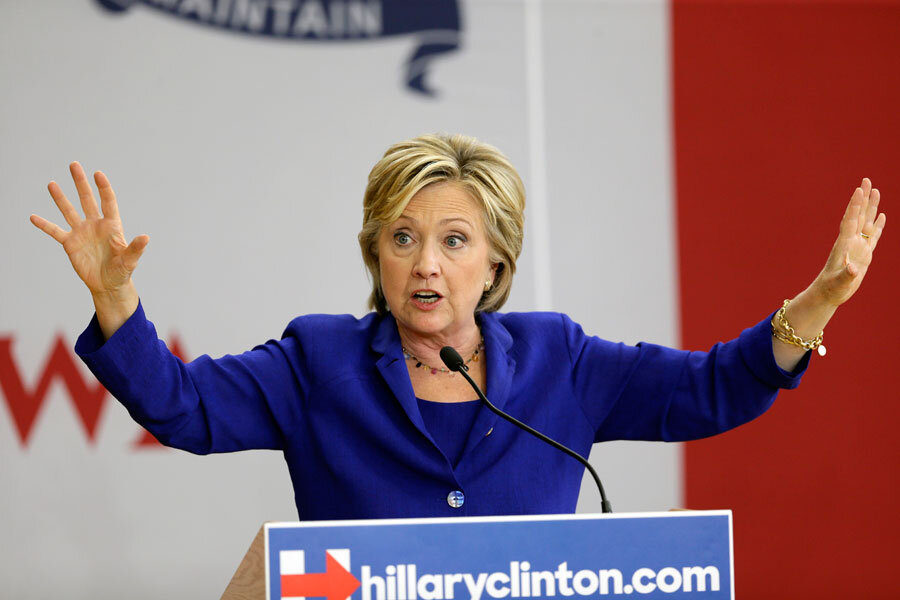Democratic debate: Why this isn't Bill Clinton's America anymore
Loading...
According to recent polls, Democratic candidates for the 2016 presidential nomination are facing a party that is more liberal now than at any point in the past 15 years.
In a June Gallup poll, 47 percent of Democrats identified as socially and economically liberal, compared with 39 percent in 2008 and 30 percent in 2001.
Since 2001, the proportion of self-described liberals in the Democratic party has been increasing, compared with a shrinking number of conservative Democrats. In 2015, 53 percent identify as liberal, 31 percent as moderate and 14 percent as conservative. The gap between liberal and conservative Democrats used to be much smaller, with 35 percent identifying as liberal in 2005 and 23 percent identifying as conservative.
The evidence from these polls shows that a liberal trend has been steadily growing since 2000, so we can’t simply give Bernie Sanders’ campaign all the credit. In fact, Senator Sanders, who calls himself a democratic socialist, has recently adopted a more restrictive stance on gun control and has raised the prominence of his support of the Black Lives Matter campaign.
So, if not just Bernie, what's behind the Democrats slide to the left?
This time around, Democratic candidates seem less eager to emulate the "triangulation" strategy that served Hillary Clinton's husband so well in the 1990s.
“Gone are the defensive politics practiced by her husband, former President Bill Clinton, who felt that the center-right nature of the American electorate in the 1990s demanded such caution,” Jonathan Martin writes for The New York Times.
A more-liberal Democratic party might have less to do with Democratic success and more to do with Republican failure. "Many of the key trends that nurtured the Republican resurgence in the mid-1990s have moderated," Pew Research found in 2007:
Yet the Democrats’ growing advantage in party identification is tempered by the fact that the Democratic Party’s overall standing with the public is no better than it was when President Bush was first inaugurated in 2001. Instead, it is the Republican Party that has rapidly lost public support, particularly among political independents.
What is going on more deeply, some analysts say, is partisan "sorting." The Republican Party, for example, used to have Northeast liberals, and the Democratic Party used to have Southern conservatives. But in recent years, liberals and conservatives have sorted themselves into the Democratic and Republican Parties, respectively, making each more strongly partisan.
Moreover, the country's demographics are changing, giving liberals a structural advantage. In many influential states, including as Ohio and Florida, nonwhite and Hispanic voters are becoming a greater share of the electorate, and data show those groups trend more liberal than white voters.In other words, it's not the Democratic voter base that’s changing, but rather the American population.
In the GOP’s "autopsy report" of the 2012 presidential election, Republicans themselves note that America looks different today. “America is changing demographically,” they write, “and unless Republicans are able to grow our appeal … the changes tilt the playing field even more in the Democratic direction.”
And as for the Democratic debates Tuesday night, experts say we can expect an "I’m-more-left-than-you" battle.
“The differences are more about how fast you got there and where you were in the past,” Joe Trippi, a longtime Democratic strategist, told The New York Times.
There have been few personal attacks between the two Democratic front-runners, but Sanders “has cast the former secretary of state as a late-comer to the liberal positions he’s held for decades on education, the environment and the economy,” writes The Associated Press, something he is likely to reiterate again during the debate.
As Gallup predicted in its June survey, “Democratic front-runner Hillary Clinton faces a more liberal base than she did when she ran for president in 2008, and no doubt will be calibrating her positions accordingly.”






